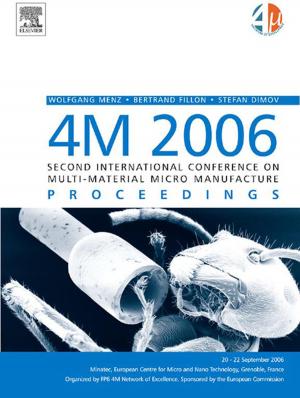Adiabatic Shear Localization
Frontiers and Advances
Business & Finance, Industries & Professions, Total Quality Management, Management & Leadership, Production & Operations Management| Author: | ISBN: | 9780080982007 | |
| Publisher: | Elsevier Science | Publication: | May 22, 2012 |
| Imprint: | Elsevier | Language: | English |
| Author: | |
| ISBN: | 9780080982007 |
| Publisher: | Elsevier Science |
| Publication: | May 22, 2012 |
| Imprint: | Elsevier |
| Language: | English |
Adiabatic shear localization is a mode of failure that occurs in dynamic loading. It is characterized by thermal softening occurring over a very narrow region of a material and is usually a precursor to ductile fracture and catastrophic failure. This reference source is the revised and updated version of the first detailed study of the mechanics and modes of adiabatic shear localization in solids. Building on the success of the first edition, the book provides a systematic description of a number of aspects of adiabatic shear banding. The concepts and techniques described in this work can usefully be applied to solve a multitude of problems encountered by those investigating fracture and damage in materials, impact dynamics, metal working and other areas. Specific chapters focus on energetic materials, polymers, bulk metal glasses, and the mathematics of shear banding as well as the numerical modeling of them. With its detailed coverage of the subject, this book is of great interest to academics and researchers into materials performance as well as professionals.
- Up-to-date coverage of the subject and research that has occurred over the past 20 years
- Each chapter is written on a different sub-field of adiabatic shear by an acknowledged expert in the field
- Detailed and clear discussions of each aspect
Adiabatic shear localization is a mode of failure that occurs in dynamic loading. It is characterized by thermal softening occurring over a very narrow region of a material and is usually a precursor to ductile fracture and catastrophic failure. This reference source is the revised and updated version of the first detailed study of the mechanics and modes of adiabatic shear localization in solids. Building on the success of the first edition, the book provides a systematic description of a number of aspects of adiabatic shear banding. The concepts and techniques described in this work can usefully be applied to solve a multitude of problems encountered by those investigating fracture and damage in materials, impact dynamics, metal working and other areas. Specific chapters focus on energetic materials, polymers, bulk metal glasses, and the mathematics of shear banding as well as the numerical modeling of them. With its detailed coverage of the subject, this book is of great interest to academics and researchers into materials performance as well as professionals.
- Up-to-date coverage of the subject and research that has occurred over the past 20 years
- Each chapter is written on a different sub-field of adiabatic shear by an acknowledged expert in the field
- Detailed and clear discussions of each aspect















